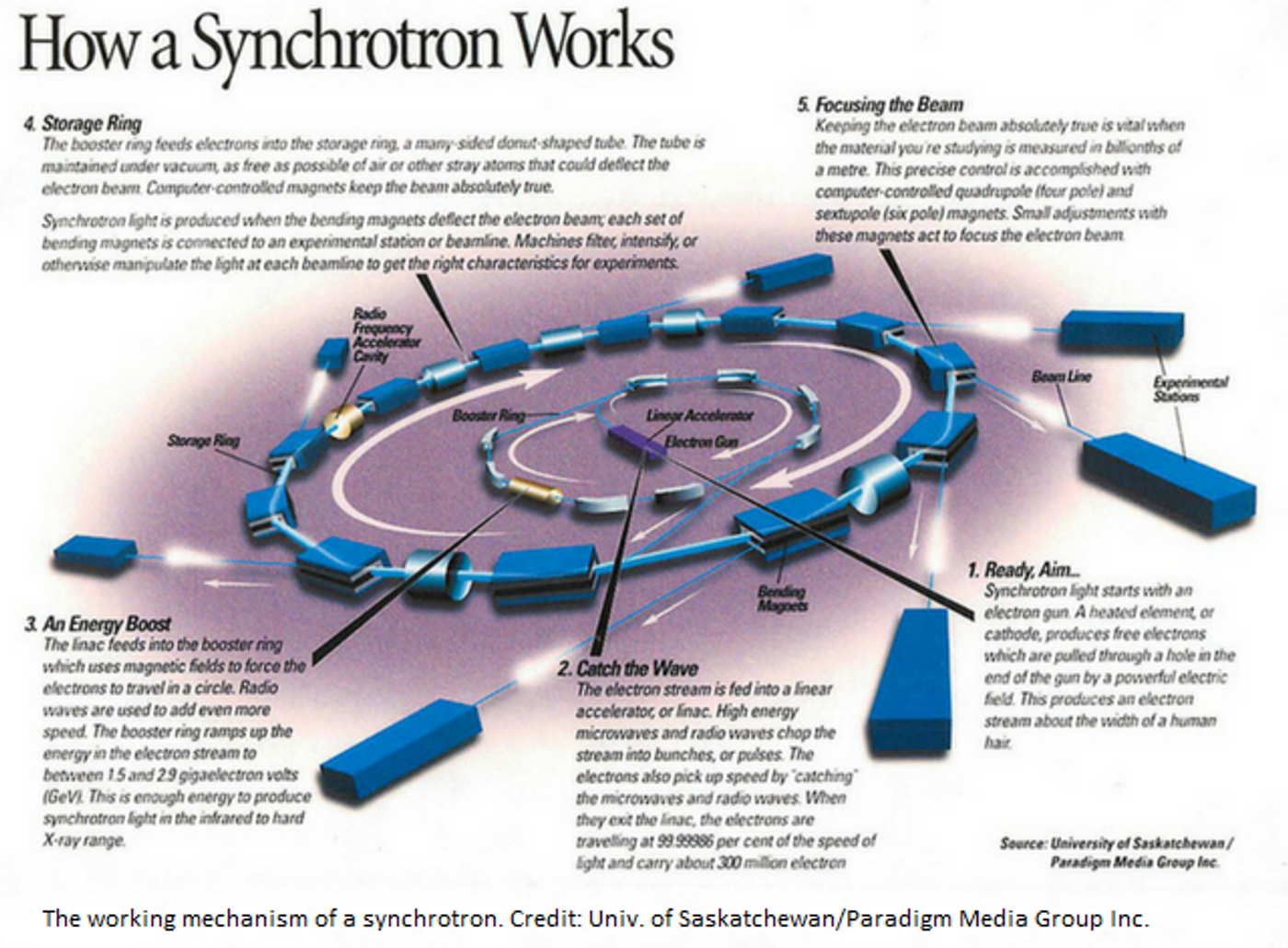The Grand Opening of SESAME
The Synchrotron-light for Experimental Science and Applications in the Middle East (a.k.a. SESAME) Research Center opened its doors in Jordan on May 16. Although not possessing any magical powers (given its folk tale-related name), this state-of-art facility is expected to advance multiple fields of science.
A synchrotron is a type of cyclic particle accelerator. Considering the popularity of this physics term, one would probably have an idea of what a particle accelerator is. But what makes synchrotrons a little different is that they have a strong magnetic field that is capable of synchronizing the circulating particles and bringing them to a high energy level (i.e. traveling at the speed of light). A wide range of electromagnetic radiation, such as microwave, infrared, visible, ultraviolet, X-ray and gamma-ray light, can be produced from the electron-spinning synchrotrons.
Besides its broad spectrum, the synchrotron-sourced light or electromagnetic radiation is also recognized for its high intensity, high brilliance, and high stability. This intense radiation is often used to examine materials with great precision and high structural detail. Therefore, synchrotrons are useful not only in physics and chemistry, but also in many other fields such as biology, medicine, environmental and earth sciences. For example, the antiviral drug oseltamivir, known by its trade name Tamiflu, acts by targeting neuraminidase, a critical enzyme of the influenza type A and B viruses. The structure of the enzyme was first revealed under the single crystal X-ray diffraction produced by a synchrotron, which facilitated the drug's development. Later the definitive structure of the drug was also discovered using the same source of X-ray.
Prior to its grand opening, series of adjustments and test beams have been successfully performed in SESAME’s 2.5 GeV (that is 2.5 × 109 electron volts) synchrotron. Currently two of the twenty-four total beamlines have been installed and are ready for experiments: they are the IR (Infra-Red) and the XRF (X-ray fluorescence). For those who have been waiting to get their hands on this machine, the launch of the SESAME center means a lot. Gihan Kamel, an infrared beamline scientist from Egypt said: “The process to have all the systems in place has been long, but we are now ready to get going to achieve results to help development using advanced synchrotron technology. The research and training in infrared beamline at SESAME will benefit the scientific community in the region to gain a better understanding on its use and applications.”
As a show for good faith, the joint research and science venture brought together some countries that have been involved in high-profile geopolitical rivalries. Current SESAME members include Cyprus, Egypt, Iran, Israel, Jordan, Pakistan, the Palestinian Authority and Turkey. As an observer, the International Atomic Energy Agency (IAEA) not only provides extensive support and training to the facility and its staff, but also helps with knowledge exchange and networking between SESAME and other centers around the globe. The international agency hopes that the success of SESAME can encourage more scientific collaboration among regional countries as well as the peaceful use of nuclear science.
Article title image: SESAME synchrotron’s main storage ring. Credit: IAEA
Source: IAEA









